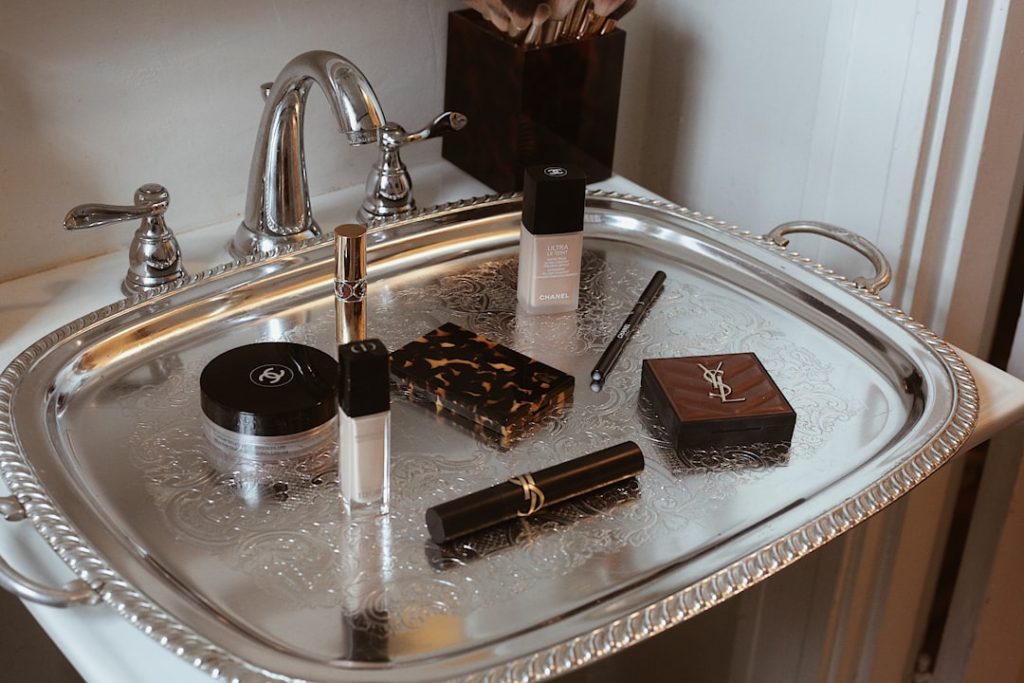Establishing a realistic budget is the cornerstone of any successful home renovation or design project. It serves as a financial blueprint that guides all subsequent decisions, from material selection to labor costs. To begin, it is essential to assess your financial situation comprehensively.
This involves not only determining how much you can afford to spend but also considering potential financing options, such as home equity loans or personal loans, if necessary. A well-defined budget should account for all aspects of the project, including materials, labor, permits, and unexpected expenses that may arise during the renovation process. Once you have a clear understanding of your financial limits, it is crucial to prioritize your spending.
Identify which elements of the project are non-negotiable and which can be adjusted or scaled back if needed. For instance, if you are renovating a kitchen, you might decide that high-quality countertops are essential, while opting for more affordable cabinetry. This prioritization allows you to allocate funds effectively and ensures that you achieve the most significant impact within your budget constraints.
Additionally, it is wise to set aside a contingency fund—typically around 10-20% of your total budget—to cover unforeseen costs that may arise during the renovation.
Key Takeaways
- Establish a clear and realistic budget before starting your renovation project.
- Opt for cost-effective materials that balance quality and affordability.
- Use smart layouts to maximize space and improve functionality.
- Update fixtures and hardware to refresh the look without major expenses.
- Consider DIY for simple tasks but hire professionals for complex work to save money and ensure quality.
Choosing Cost-Effective Materials
Selecting cost-effective materials is a pivotal aspect of any renovation project, as it directly influences both the overall budget and the aesthetic outcome. The market is replete with options that offer durability and style without breaking the bank. For example, laminate countertops can mimic the appearance of natural stone at a fraction of the cost, making them an attractive choice for budget-conscious homeowners.
Similarly, vinyl flooring has evolved significantly in recent years, offering a wide range of designs that can replicate hardwood or tile while being more affordable and easier to maintain. In addition to exploring alternative materials, it is also beneficial to consider sourcing from local suppliers or discount retailers. Many cities have building supply outlets that offer surplus or slightly damaged materials at reduced prices.
These can include everything from tiles to cabinetry, providing an opportunity to save money while still achieving a high-quality finish. Furthermore, shopping during sales events or clearance periods can yield significant savings on materials that are otherwise considered premium. By being resourceful and open to various options, homeowners can achieve a stunning renovation without overspending.
Maximizing Space with Smart Layouts

Efficiently maximizing space through smart layouts is essential, especially in smaller homes or apartments where every square foot counts. A well-thought-out layout can transform a cramped area into a functional and inviting space. One effective strategy is to adopt an open-concept design, which removes unnecessary walls and barriers between rooms.
This approach not only enhances the flow of natural light but also creates an illusion of spaciousness, making areas feel larger than they are. For instance, combining the kitchen and living room into a single cohesive space can foster social interaction while optimizing functionality. Another technique for maximizing space is to incorporate multi-functional furniture.
Pieces such as sofa beds, extendable dining tables, or ottomans with storage capabilities can serve dual purposes, allowing homeowners to make the most of limited square footage. Additionally, vertical space should not be overlooked; utilizing wall-mounted shelves or tall bookcases can draw the eye upward and create additional storage without consuming valuable floor space. By carefully considering layout and furniture choices, homeowners can create environments that feel open and organized while accommodating their lifestyle needs.
Updating Fixtures and Hardware
| Metric | Description | Typical Range | Importance |
|---|---|---|---|
| Fixture Lifespan | Average duration a fixture remains functional before replacement | 5-15 years | High |
| Hardware Upgrade Frequency | Number of times hardware is updated or replaced annually | 1-3 times/year | Medium |
| Installation Time | Average time required to update fixtures or hardware | 1-4 hours per fixture | Medium |
| Cost per Update | Average cost involved in updating a single fixture or hardware | Varies by type and complexity | High |
| Energy Efficiency Improvement | Percentage increase in energy efficiency after update | 10-40% | High |
| Downtime During Update | Time facility or area is non-operational during update | 0.5-2 hours | Medium |
| Customer Satisfaction | Feedback score related to updated fixtures and hardware | 80-95% | High |
Updating fixtures and hardware is one of the most impactful yet cost-effective ways to refresh a space without undertaking a full renovation. These elements often serve as the finishing touches that can elevate the overall aesthetic of a room. For example, swapping out outdated light fixtures for modern pendant lights or chandeliers can dramatically change the ambiance of a space.
Similarly, replacing cabinet knobs and drawer pulls in kitchens and bathrooms can provide a quick facelift that enhances both functionality and style. When selecting new fixtures and hardware, it is essential to consider the overall design theme of your home. Opting for cohesive styles—such as brushed nickel for a contemporary look or oil-rubbed bronze for a rustic feel—can create a harmonious environment throughout your living spaces.
Additionally, shopping at home improvement stores or online marketplaces can yield affordable options without sacrificing quality. Many retailers offer trendy designs at competitive prices, allowing homeowners to achieve a high-end look on a budget.
DIY vs Hiring Professionals
The decision between tackling renovations as a DIY project or hiring professionals is often influenced by budget constraints and personal skill levels. DIY projects can be incredibly rewarding and cost-effective; however, they require careful consideration of time, effort, and expertise. For instance, painting walls or installing simple shelving units are tasks that many homeowners can handle themselves with minimal tools and experience.
Engaging in DIY projects not only saves money but also allows for a personal touch that reflects individual style. On the other hand, certain aspects of home renovation may necessitate professional expertise to ensure safety and quality results. Electrical work, plumbing changes, and structural modifications are areas where hiring licensed professionals is advisable to avoid potential hazards or costly mistakes.
Additionally, professionals often have access to resources and materials that may not be available to the average homeowner, which can enhance the overall quality of the project. Striking a balance between DIY efforts and professional assistance can lead to successful renovations that meet both budgetary and aesthetic goals.
Repurposing Existing Elements

Repurposing existing elements within your home is an innovative way to save money while adding character to your renovation project. Instead of discarding old furniture or fixtures, consider how they might be transformed or integrated into your new design scheme. For example, an old wooden dresser can be refinished and used as a stylish bathroom vanity with some minor modifications.
Similarly, vintage doors can be repurposed as unique headboards or decorative wall art, infusing your space with history and charm. In addition to furniture, architectural elements such as moldings or beams can also be reused creatively. Salvaging original woodwork during renovations not only preserves the character of your home but also reduces waste and costs associated with new materials.
By thinking outside the box and embracing creativity, homeowners can breathe new life into existing elements while achieving a distinctive look that reflects their personal style.
Adding Personal Touches on a Budget
Incorporating personal touches into your home design does not have to come at a high price; there are numerous budget-friendly ways to infuse individuality into your space. One effective method is through art and decor that resonates with your personal experiences or interests. Local artists often sell affordable prints or original works at art fairs or online marketplaces, allowing you to support local talent while curating a unique collection for your home.
Another way to personalize your space is by creating DIY decor items that reflect your personality. Simple projects such as custom photo frames, hand-painted planters, or even homemade wall art can add warmth and character without straining your budget. Additionally, incorporating family heirlooms or travel souvenirs into your decor can tell a story about who you are while making your home feel more inviting and lived-in.
Finding Affordable Design Inspiration
Finding affordable design inspiration is crucial for homeowners looking to refresh their spaces without overspending. The internet has revolutionized access to design ideas through platforms like Pinterest and Instagram, where users can explore countless images showcasing various styles and trends. These platforms allow individuals to curate boards filled with inspiration tailored to their tastes while providing links to budget-friendly products that align with their vision.
Moreover, design blogs and websites often feature before-and-after transformations that highlight cost-effective solutions for common design dilemmas. Many bloggers share their experiences with specific projects, detailing their budgeting strategies and material choices along the way. Visiting local showrooms or home improvement stores can also provide tangible inspiration; many retailers showcase room displays that highlight how different elements work together in real-life settings.
By leveraging these resources, homeowners can gather ideas that resonate with their style while remaining mindful of their budget constraints.




